Russian industry creates an EW system for strategic purposes
Some details of current work in creating an EW strategic system were disclosed by the press service of the Concern "Radio-Electronic Technologies" (KRET). It is reported that at present the concern's enterprises are working to create a promising EW system, intended for use at a strategic level. Due to a number of characteristic features, the new complexes, united in a single network, will be able to perform some combat missions capable of causing serious damage to the enemy’s communication and control systems, thereby changing the course of the armed conflict.
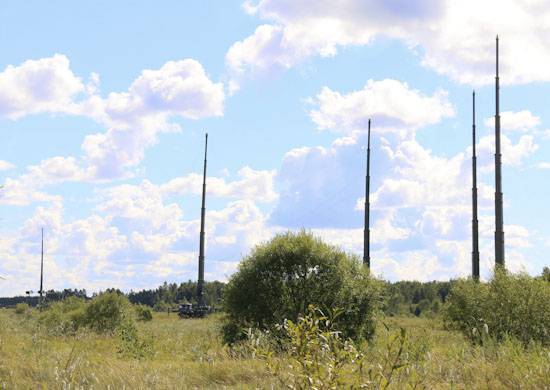
Complex "Murmansk-BN" in position. Photo of the Ministry of Defense of the Russian Federation / Mil.ru
As a pretext for starting the development of a promising strategic system, current foreign works are named. In recent years, the armed forces of the United States and other NATO countries have been working to implement the concept of the so-called. network-centric battle management based on a single information and communication space. The essence of this concept is the broadest application of various means of communication, allowing all units and their fighters, as well as control structures to interact through a common network. The main advantage of this approach is a sharp reduction in the time required to transfer data from intelligence to consumers.
The answer to current foreign work, according to current national plans, should be the creation of a strategic electronic warfare system, one of the main tasks of which will be disrupting the work of the enemy's network-centric controls. Vladimir Mikheyev, Advisor to the First Deputy General Director of KRET, noted that the creation of such systems can be called the realization of the network-centric principle in defense.
The main idea of a promising domestic project is the disruption of the network-centric structure of communications and control. The suppression of the radio channels used by the adversary for one purpose or another will make it possible to seriously disrupt the interaction of its units and structures, thereby sharply reducing the effectiveness of their combat work. Without the ability to timely receive the full amount of the required data, the units and units, as well as the command of different levels, risk to be in a very difficult situation.
One of the main goals of the promising Russian electronic warfare system could be the US Air Force Global Short-wave Communication System HFGCS (High Frequency Global Communications System). With the help of this communications complex, the US command is currently monitoring the work of strategic nuclear forces and the military aviation. A large number of ground control radio stations, as well as the corresponding equipment of airplanes and aerodromes, make it possible to unite all participants in the complex into a common network through which command orders are transmitted and flights are controlled. Also, if necessary, ships of the naval forces and formations of the US or NATO ground forces can be connected to the common network.
According to known data, the HFGCS communication system uses single-band telephony with operation on several main and spare frequencies in the range from 3 to 25 MHz. It is noteworthy that the ratings of the frequencies used in the radio are indicated openly. Thus, despite its importance, the United States Air Force Global Short-Wave Communication System can in theory be suppressed by electronic warfare against relevant characteristics.
In the context of creating an EW strategic system, one of the newest complexes of this class is mentioned. An existing complex “Murmansk-BN” can become an element of a promising system. A number of such complexes have already been built and transferred to the armed forces of Russia, which have begun full-scale operation of the new materiel. In addition, additional funds are being created to enhance the performance of existing equipment and expand its capabilities. Such work, as reported, has already reached the stage of trial operation of promising products.
According to the latest data, the specialists of the Russian defense industry have developed a special subsystem designed to ensure the interaction of several EW systems “Murmansk-BN”. With the help of this development, the individual means of electronic warfare will be combined into a single network and controlled through it. The prototype of the subsystem for working with the Murmansk-BN complexes has already passed all the necessary tests, including the state ones. According to the results of inspections, the subsystem was recommended for adoption.
The few open data on the new project clearly indicate that the Murmansk-BN complex will be one of the main elements of a promising strategic radio-electronic warfare system. This complex is already in service with the Russian army and is being mass-produced for the purpose of delivery to certain units. It has high characteristics that allow solving tasks in the framework of large regions and entire regions. It should be expected that the development of a new subsystem, which is responsible for the joint operation of the complexes, will significantly increase the potential of Murmansk-BN through more efficient centralized management.
The EW Murmansk-BN complex is one of the most powerful domestic systems in its class. It differs from other complexes in size and composition, as well as in range. Through the use of high-power transmitters and other equipment with high performance, short-wave radio communication channels are suppressed at ranges up to 5 thousand km. Thus, only one complex in its working position is able to control the situation in a large region, if necessary “hammering” the enemy’s radio channels with interferences.
The price for the uniquely high performance was the large size and weight of the components of the complex. The basis of "Murmansk-BN" are seven four-axle trucks of the brand "KAMAZ". Support platforms with antenna-mast devices, control point, energy systems, etc. are mounted on the serial high-capacity chassis. It is known that antenna devices can be mounted both on cars and on two-axle trailers, which should be towed by trucks with similar equipment. The EW system kit includes a large number of cables designed to connect individual elements of the complex during its preparation for work. Special mention deserves a complex mesh system that performs the functions of the antenna.
Probably one of the most interesting elements of the Murmansk-BN complex are machines with antenna mast devices. On the cargo platform of the base truck, having outrigger jacks for stabilization in the working position, a swinging system with a telescopic mast is mounted. By pushing the seven-section square construction apart, the upper elements of the antenna are lifted to a height of 32 m. Attachments are also provided on various parts of the mast for mounting various portions of the antenna web. Lifting and extending the mast is carried out using several hydraulic actuators.
During the deployment of the complex machines with masts occupy the necessary position of "semicircle." Next, the antenna cables are mounted on the mounting of the mast, after which it is possible to lift the antenna-mast devices into position. After that, the complex forms an antenna with a length of 800 m. Next to such an antenna are located a control point and other elements of the complex. In total, 640 thous. Sq. M. Is required to accommodate Murmansk-BN. Due to the considerable labor intensity of the work, the deployment process takes 72 hours.
According to available data, the new domestic EW complex is able to monitor the situation on the air and identify signals from those or other enemy electronic devices operating on short waves. The high sensitivity of the equipment and the high power of the transmitters make it possible to find and then suppress communication systems of the operational-tactical and operational-strategic level. Declared the possibility of suppressing radio communications at distances up to 5 thousand km, which is a record among domestic complexes of this class. At certain operating modes, the radiation power reaches 400 kW, which gives a uniquely high performance range.
Working in the short-wave range, the Murmansk-BN complex is capable of hampering or excluding the operation of various communications and control systems of a potential adversary. So, one of its “goals” may be elements of the American HFGCS system that uses these frequencies. In addition, the calculation of the complex may interfere with the normal operation of other means of communication and control used by combat aircraft, fleet or ground forces. Taking into account the declared range characteristics, it is easy to predict the consequences of the full-fledged combat use of the Murmansk-BN complex in an armed conflict.
To date, the Russian armed forces have received several new electronic warfare complexes. In December 2014, the first production complex "Murmansk-BN" was transferred to the coastal forces of the Northern Fleet of the Russian Navy. Soon the servicemen mastered the new technique, and then got the opportunity to test the acquired skills in practice. In March, 2015, EW units were involved in a surprise check of the combat readiness of troops, during which they used their equipment to disrupt the work of reconnaissance aircraft of a conditional enemy. The ground complex was supposed to prevent the aircraft from transmitting the collected data to the base. As reported by the command of the armed forces, in the framework of the exercises, the calculations of Murmansk-BN fully coped with the tasks set, and the complex confirmed its capabilities.
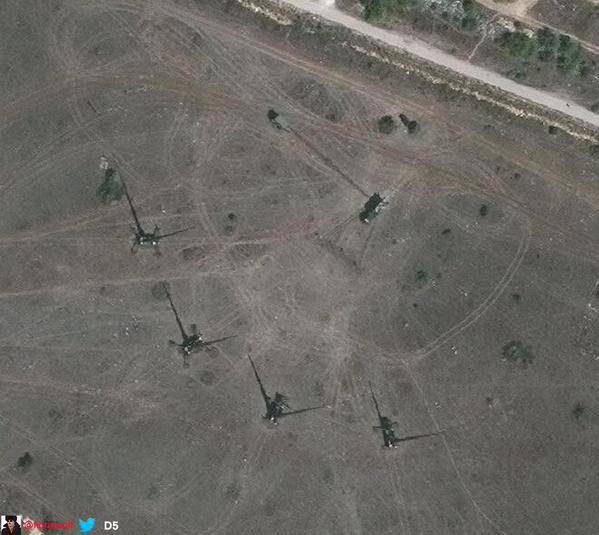
Satellite image of the position of the complex "Murmansk-BN". Photo Russianarms.ru
It is known about the deployment of Murmansk-BN complexes in the region of Sevastopol. In addition, the continuation of the serial production of the latest technology will continue the re-equipment of the troops, resulting in the emergence of complexes with unique characteristics in new directions. As a result, most of the borders of the country and border regions will be covered by EW systems. The newly developed and tested control subsystem, which allows to combine the Murmansk-BN complexes into a single network, will give them new opportunities. Apparently, the further development of management tools will lead to the formation of a full-fledged system of electronic warfare at a strategic level, covering all state borders and nearby regions abroad.
It is not difficult to guess what the consequences of the successful completion of the construction of a strategic electronic warfare system, the main elements of which will be the Murmansk-BN complexes, can be. For example, complexes located in the western regions of the country will be able to “hit” targets throughout Europe, North Africa, the Middle East and the Mediterranean. Accommodation in the Far Eastern regions will give control over a significant area of the Pacific Ocean and nearby regions. The complexes of the Northern Fleet, in turn, can "block" the entire Arctic, as well as Greenland and even part of the northern regions of Canada.
Successful implementation of existing plans for the construction of a strategic electronic warfare system will give our country an additional means of deterring a potential adversary, unrelated to the use of nuclear weapons. The presence of a certain number of Murmansk-BN complexes on duty, all the more connected by a single management subsystem, may be a factor capable of having a significant impact on the course of an armed conflict. Moreover, the very fact of the existence of such an EW system may be a sufficient reason for the rejection of aggressive plans. The high risk of loss of communication channels of the operational-tactical and operational-strategic level in itself should be considered a good means of deterring a potential enemy. It is unlikely that the aggressor will decide to fight, knowing that at least part of his control systems will be disabled.
According to the available information, from 2014, the Russian armed forces received and put into operation several EW Murmansk-BN complexes, not counting other types of similar equipment. Also recently, work has been completed on a control subsystem that combines electronic warfare complexes into a common network. On the basis of this subsystem and the existing, as well as, possibly, promising complexes with high characteristics, the newest strategic EW system will be built in the foreseeable future. Already it is difficult to overestimate the effect of the completion of such a program.
It should be noted that the overall complexity of the work to create a large strategic system will have to affect the time of the implementation of plans accordingly. Official data on the completion of the work has not yet been published. Nevertheless, it can be assumed that the full-fledged work of a promising system will begin no earlier than the end of this decade. Only after that the country will be able to get an additional means of protection against a possible attack.
The development of domestic means of electronic warfare continues, resulting in the emergence of more and more new complexes of various classes and different purposes. In addition, the issue of creating a system that combines existing and prospective complexes into one large structure of strategic purpose appeared on the agenda. The existing successes in the field of EW make it possible to look to the future with optimism. Over the next few years, the Russian armed forces will be able to begin operating newer systems of particular importance to the country's security.
On the materials of the sites:
http://kret.com/
http://function.mil.ru/
https://ria.ru/
https://rg.ru/
https://ridus.ru/
http://tvzvezda.ru/
https://defendingrussia.ru/
http://bastion-karpenko.ru/
http://russianarms.ru/
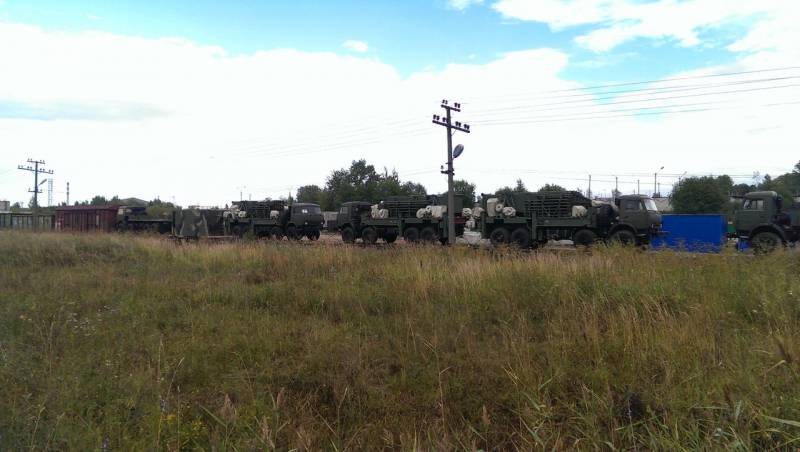
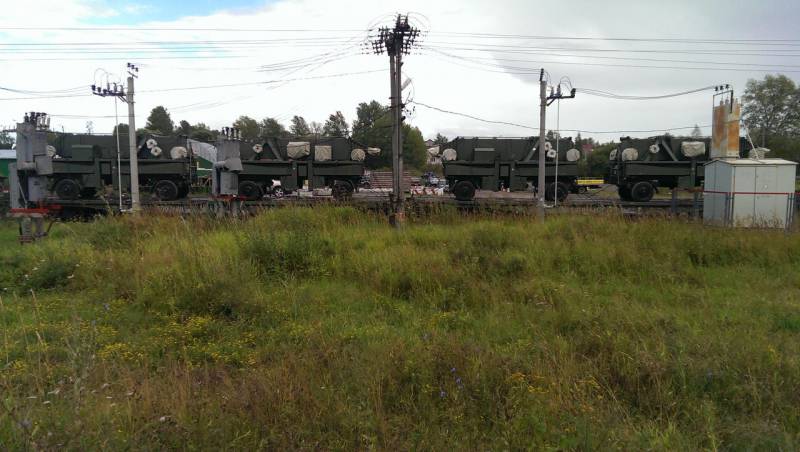
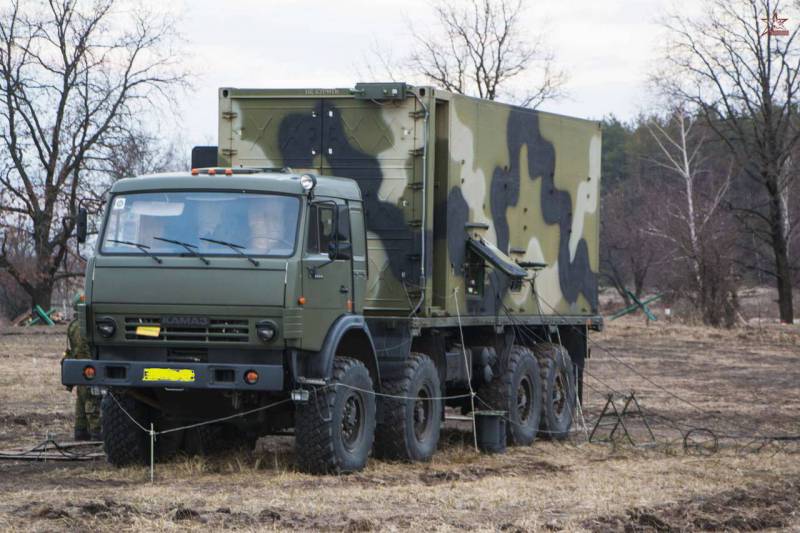
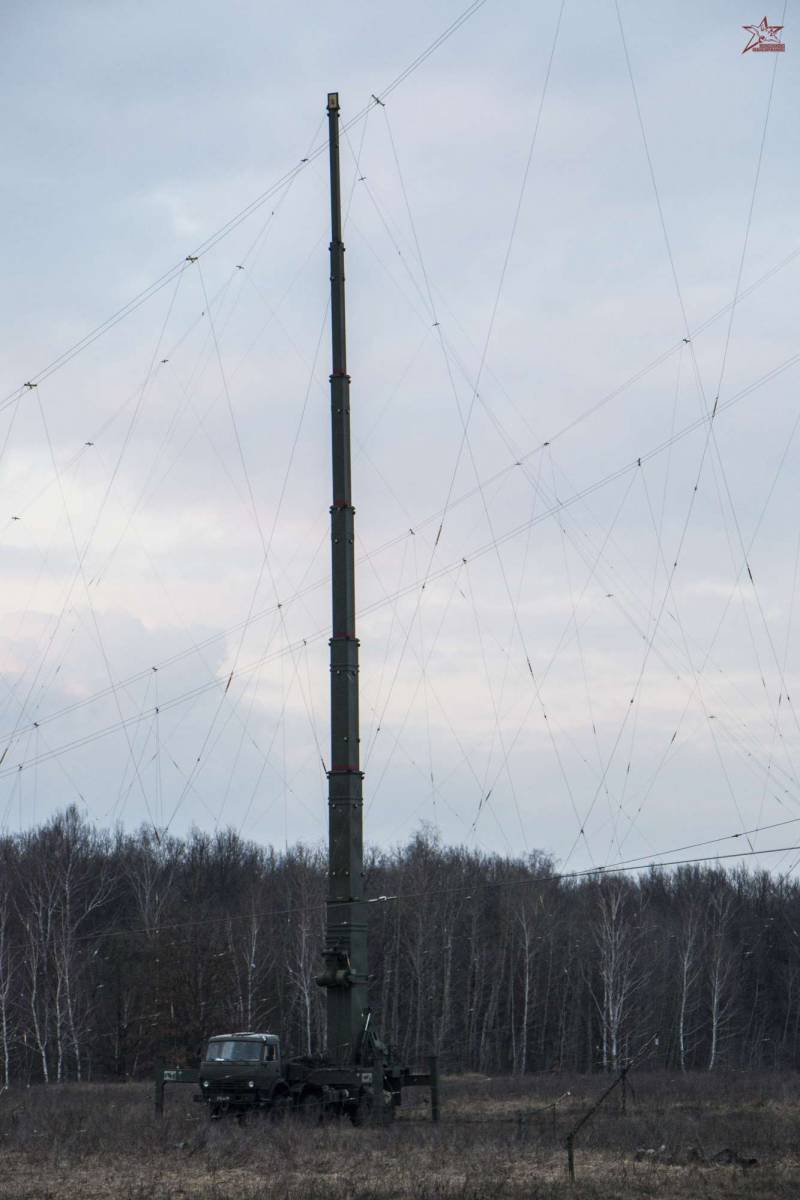
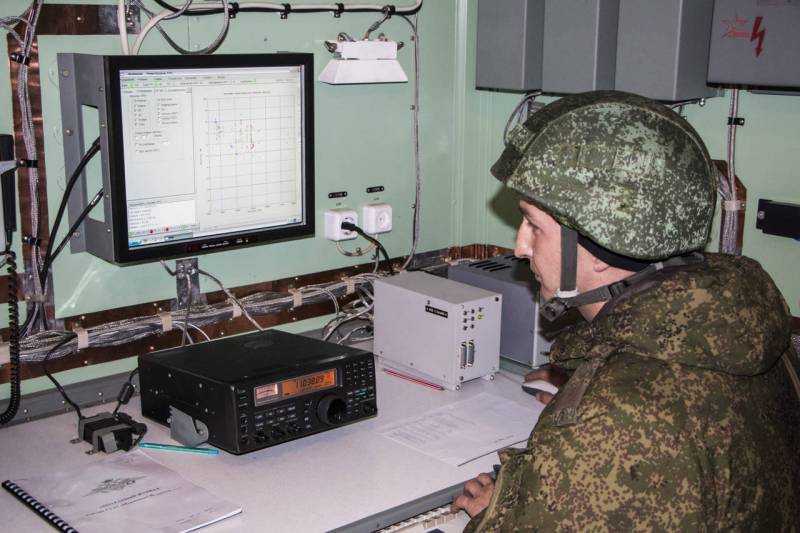
Information